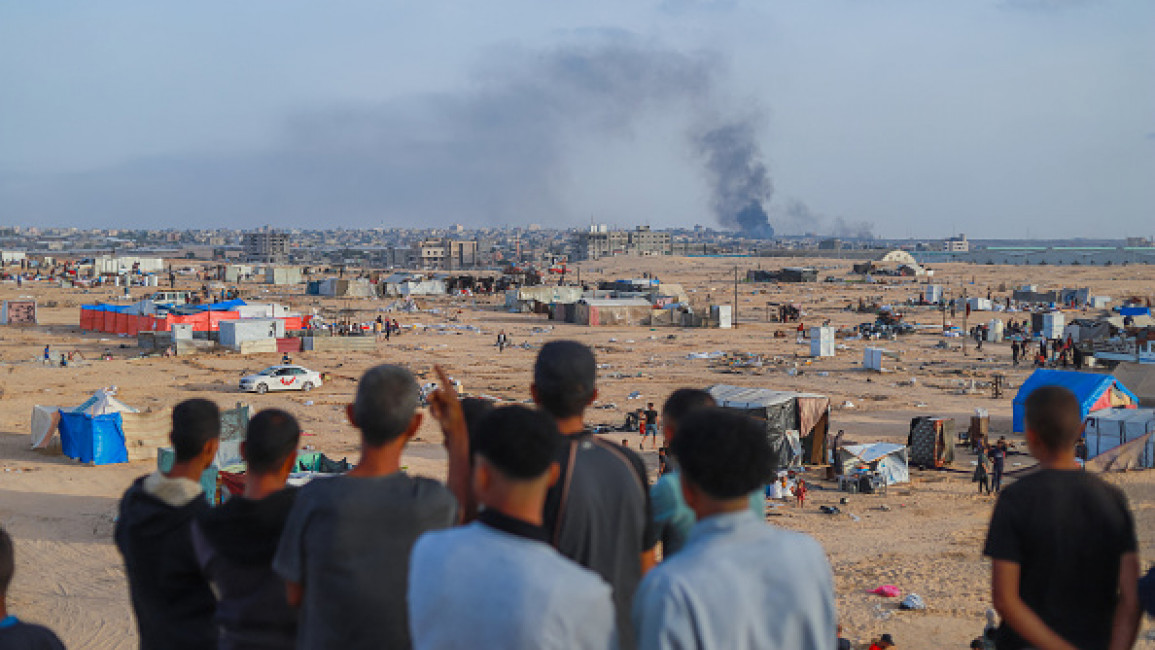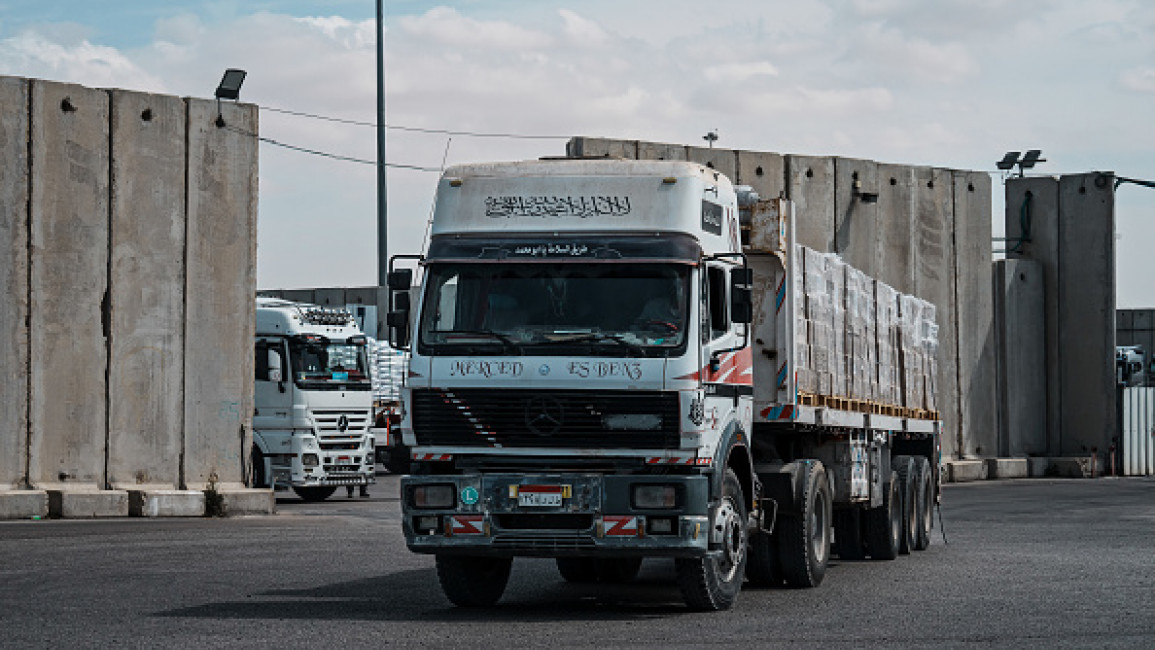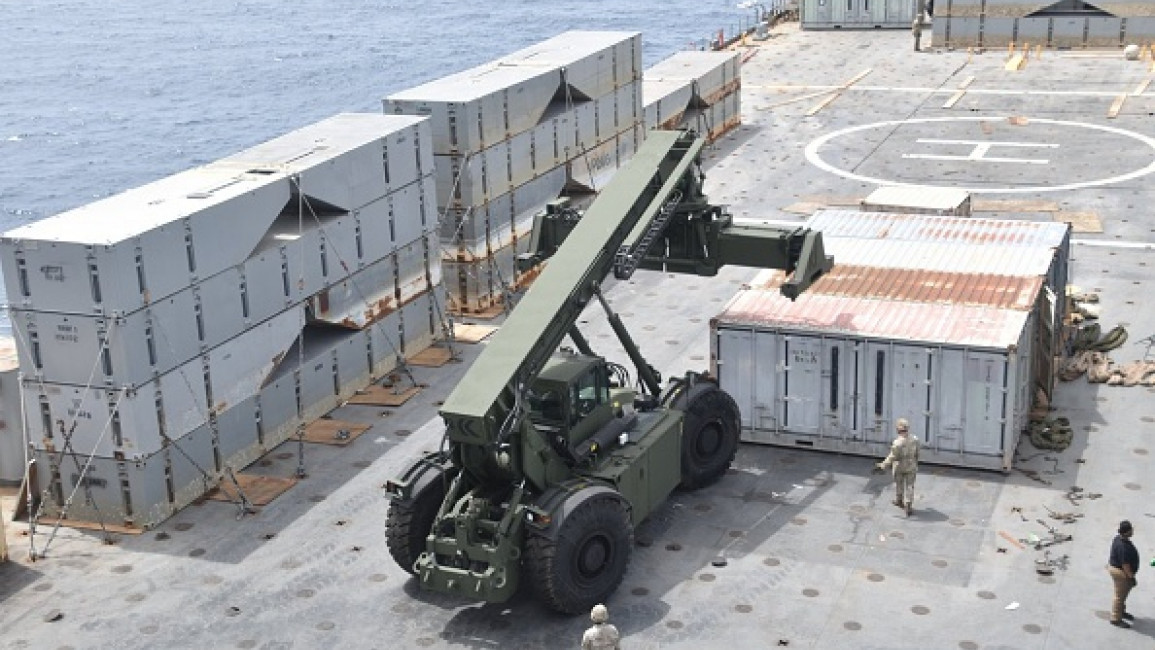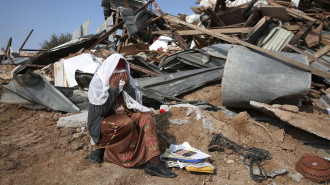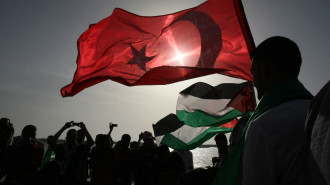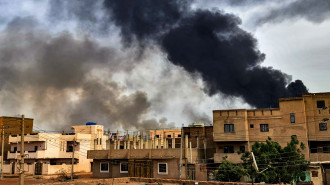
How logistics and lies obscure Israel's responsibility for Gaza's humanitarian crisis

Since the start of Israel’s ongoing Rafah invasion in early May, humanitarian workers have been displaced alongside over one million Palestinians, with movement within the Gaza Strip virtually impossible.
Telecommunications are frequently down, and many humanitarian activities have been halted. Aid organisations are reporting that most Gazans are unsure where their next meal will come from and that conditions in new displacement sites are worse than ever.
With the quasi-closure of the Rafah and Karem Abu Salem/Kerem Shalom crossings into Gaza across most of May, the majority of Gazans are left unable to access any kind of assistance.
Even before then, the amount of aid coming through was insufficient to meet the population’s survival needs.
“[In May], around one million Gazans were herded like cattle into a tiny strip of land on false promises of safety and humanitarian assistance,” writes Suze van Meegen, head of operations in Gaza for the Norwegian Refugee Council (NRC).
"The carnage in Rafah shows [once again] that safety is a fallacy. The elaborate obstacle course we are forced to navigate to get the most basic relief to people is making humanitarian assistance one too."
Despite international demands and Israeli promises, there has only been a slow trickle of aid into Gaza, with the NRC’s head of operations saying the organisation has not received supplies since 3 May.
Meanwhile, COGAT - the Israeli body for the Coordination of Government Activities in the Territories – claims that trucks laden with humanitarian aid are entering Gaza almost daily, with numbers even increasing to the extent that there “is no humanitarian crisis in Gaza,” as Israeli Prime Minister Benjamin Netanyahu said recently.
"Aid organisations are reporting that most Gazans are unsure where their next meal will come from and that conditions in new displacement sites are worse than ever"
"COGAT is probably dramatically inflating the number of trucks entering Gaza," Mina Johansen, an aid worker with an international NGO in Israel and Palestine whose name has been altered to protect her identity, told The New Arab.
"We don’t really have access to the land crossings anymore, and it was never regular or predictable in the first place. The little that is getting through is vastly insufficient to meet Gazans' basic needs for survival."
Johansen says that she and her colleagues have never seen a man-made situation like this before. "Keeping Gazans in such a tiny space, bombing them with the most high-tech weapons, and then withholding the aid they need for survival (while pretending you are helping them). This is madness."
A spree of cosmetic efforts
Part of Israel’s self-proclaimed success in increasing humanitarian access includes the opening of new crossings such as Erez and West-Erez/Zikim in northern Gaza, despite the simultaneous closure of the main crossings (Karem Abu Salem and Rafah) in the south.
The international press has, for the most part, acted as a loudspeaker for these Israeli narratives, with Western politicians and diplomats warmly welcoming such announcements before witnessing any tangible results – results that are difficult to verify due to Israel’s severe restrictions against journalists and humanitarians in Gaza, a power hold that allows Israel to dominate the narrative about the situation on the ground.
|
|
Meanwhile, Israel has taken credit for allowing its allies to airdrop aid over Gaza in recent months - something that humanitarian actors have criticised as expensive, inefficient, and dangerous, with at least 18 people killed (directly or indirectly).
“These efforts seem more aimed at placating international criticism than genuinely addressing the dire humanitarian situation,” Johansen told TNA. “The emphasis on logistical solutions further obfuscates Israel's accountability for the dire humanitarian situation in Gaza, masking the true extent of the crisis from the international community.”
Other logistical deceptions include the US-led maritime corridor from Cyprus, which opened in May through the construction of a $320m pop-up pier. However, even at full capacity, the pier would have only allowed 150 trucks per day to enter Gaza. By contrast, 500 trucks entered Gaza each working day before October, when the scale of needs was much lower.
Moreover, right after the pier’s launch, vessels disconnected from it and washed up on an Israeli beach, while a few days later, the pier suffered weather damage - costly repairs for a costly project of little good. Humanitarian actors have continuously stated that land access is the most simple and efficient way to reach people in Gaza.
Most humanitarian organisations have not yet used the new maritime route, hesitant to get involved in the project led by the US military that involved the destruction of civilian homes.
NGOs have issued a joint statement calling the maritime route and new Erez and West-Erez/Zikim crossings “cosmetic” efforts, stating that humanitarian access has all but disintegrated.
"[Israeli] efforts seem more aimed at placating international criticism than genuinely addressing the dire humanitarian situation"
Paid goods over free aid
Of the trickle of aid getting through to Gaza, a very significant amount are commercial trucks, with private companies likely securing deals with Israeli authorities to enter and sell goods, according to Johansen.
Commercial deliveries, however, are vastly different from humanitarian aid. Some of these commercial trucks reportedly bring in items such as energy drinks, cigarettes, and sweets - items that do not necessarily meet humanitarian standards, and that exclude important medical, shelter, and other humanitarian goods, according to Johansen.
Additionally, humanitarian coordination actors lack visibility on where these goods go and who can access them - likely not the most vulnerable.
The notion that Gazans must pay for basic necessities in a highly inflated economy, while reportedly more than 2,000 trucks with humanitarian goods waited outside Gaza’s borders throughout most of May to be freely distributed, exacerbates the grievances of humanitarian workers.
|
|
"Even 500 trucks per day, the pre-October number, would be far from enough to support Gaza's population today, many of whom are injured, displaced, starved, and more vulnerable than ever before," says Johansen.
“And when Israel claims that so many trucks are entering Gaza - they don’t mention that these are only half full or that many important items are blocked.”
Adding to the aid crisis is the fact that trucks of all kinds are being violently attacked by settlers on their way to Gaza.
“We make very small steps forward and then end up back at square one,” NRC’s Suze van Meegen recently wrote.
“If humanitarian supplies are allowed into Gaza, we might not have fuel with which to transport them. When we have fuel, we may not have cash with which to pay for trucks. The day we can pay for trucks, the roads to the warehouse could be too dangerous to travel. And if we can get to the warehouse, the staff on whom we depend to load cargo could have fled when the explosions came too close.”
Call it a famine
Prior to 7 October, Gazans could partially meet their food security needs self-sufficiently, according to the UN’s Food and Agricultural Organisation. Since the destruction of almost all infrastructure in Gaza, including the agricultural sector, this is no longer possible. The current trickle of aid, including commercial trucks and all land, air, and sea crossings, is insufficient to meet the massive humanitarian needs.
Palestinian and humanitarian actors in Gaza are calling for a famine to be officially declared. However, UN (and related) institutions reportedly struggle to meet all the requirements for a famine declaration: overall mortality rates must be high, including deaths from starvation but also from other forms of malnutrition, deteriorating health, and other causes. However, no official counts of overall mortality rates in Gaza exist anymore.
Even keeping track of direct casualties from bombings and shootings has been challenging for the Gaza Ministry of Health and the UN: they currently say that at least 36,000 were killed from fighting between October to May - likely a significant undercount.
"When Israel claims that so many trucks are entering Gaza - they don't mention that these are only half full or that many important items are blocked"
But this does not take into account the overall mortality rate in Gaza from a lack of access to healthcare, food, water and shelter, as well as other causes, which could be far higher and will continue to rise even in the event of a ceasefire.
With the unprecedented killing of journalists by Israel in Gaza, accessing reliable information from the ground has become increasingly difficult, with journalists abroad increasingly relying on information from humanitarian aid workers in or near Gaza. As of 25 May, at least 108 journalists and media workers have been killed since 7 October, marking the deadliest period for journalists in many decades.
Humanitarian aid workers are increasingly in danger too. Ever since Israel and its supporters began attacking UNRWA (the Palestinian relief agency) various humanitarian actors, especially the UN, have been preoccupied with safeguarding themselves from similar attacks. This has only worsened in recent weeks: on 29 May, bills aimed at designating UNRWA as a terrorist organisation passed preliminary readings in Israel’s parliament.
These bills would criminalise the organisation, its activities, and its staff. At the same time, the Israeli Land Authority ordered UNRWA to vacate its East Jerusalem premises within 30 days - a territory that is internationally recognised as Palestinian and illegally occupied by Israel since 1967. These developments were even condemned by the European Union (EU).
|
|
Israel’s intimidation tactics are working. The UN, along with its coordinating structures and senior leadership, should normally be the main entity to coordinate information about humanitarian aid and access to the Gaza Strip to provide a comprehensive analysis of the true scale of humanitarian needs in Gaza and the aid that is entering.
However, Israel has created conditions that leave even the UN struggling to have an overview of the reality on the ground, and reluctant to publicly contradict Israel’s narrative out of fear of repercussions.
In short, the lack of accurate information about the reality on the ground is not an accidental by-product of Israel’s attack on Gaza. Intentional confusion, contradictory figures, threats and attacks on journalists, humanitarian workers, and the UN, as well as strong pro-Israeli lobbying at a global scale, all contribute to a distorted narrative about the situation on the ground and the huge information gaps around the true scale of the humanitarian catastrophe.
Amid the escalating crisis, Israel and its allies' emphasis on vacuous logistical solutions appears evermore a facade aimed at deflecting attention from their complicity in the catastrophe, one of the biggest humanitarian crises of the 21st century.
Sebastian Shehadi is a freelance journalist and a contributing writer at the New Statesman.
Follow him on Twitter: @seblebanon
